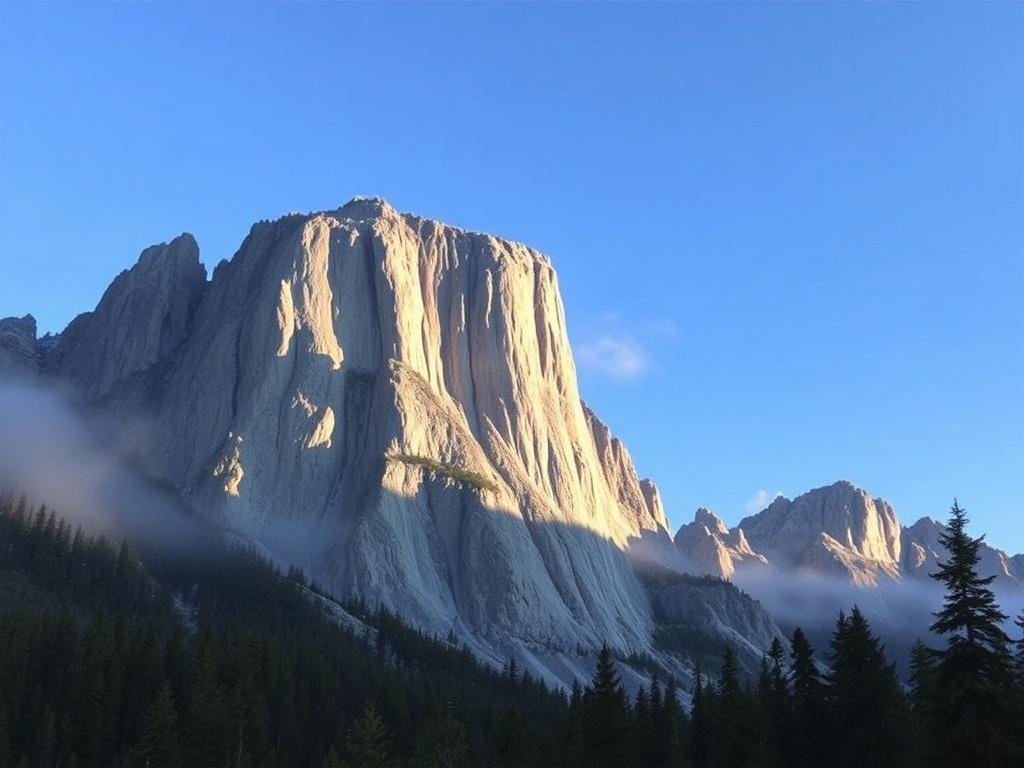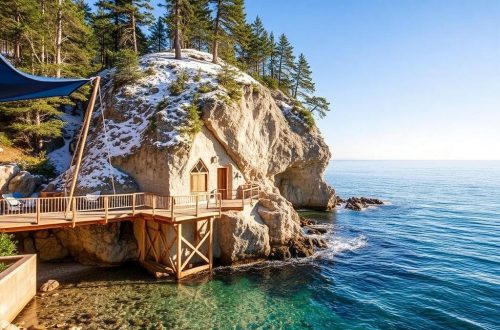
The Most Incredible Natural Wonders: Exploring Earth’s Breathtaking Marvels
The world we live in is filled with astonishing natural wonders that captivate our imagination and inspire a deep sense of awe. From towering mountains to vast deserts, from mystical caves to vibrant coral reefs, these incredible natural wonders remind us of the power and beauty of nature. Whether you are an avid traveler, a nature enthusiast, or someone who simply appreciates the planet’s breathtaking landscapes, diving into the wonders of the natural world is a rewarding experience. In this article, we will explore some of the most incredible natural wonders on Earth, shedding light on what makes them unique and why they continue to draw millions of visitors every year.
Nature has crafted its masterpieces over millions of years, combining geological processes, climatic changes, and biological evolution to form landscapes and ecosystems that seem almost otherworldly. These natural wonders are more than just pretty sights; they represent the dynamic forces shaping our planet and provide us with glimpses into its history and future. Whether it’s the intricate formations in the Grand Canyon or the radiant northern lights dancing in the Arctic sky, each site tells a story of Earth’s ongoing transformation.
The Grand Canyon: A Monument to Time
One of the most iconic and incredible natural wonders is the Grand Canyon, carved over six million years by the persistent flow of the Colorado River. Located in Arizona, United States, the Grand Canyon stretches approximately 277 miles long, up to 18 miles wide, and plunges more than a mile deep. This immense chasm reveals nearly two billion years of Earth’s geological history through its layered bands of red rock. Visitors can hike the rugged trail systems or simply gaze in amazement as sunlight shifts the colors across the canyon walls throughout the day.
The Grand Canyon’s vast scale and intricate rock formations demonstrate the extraordinary power of natural erosion. More than just a visual marvel, it hosts diverse ecosystems from desert scrub to ponderosa pine forests. Wildlife such as mountain lions, condors, and bighorn sheep call the canyon home. When exploring the Grand Canyon, you are immersed in a place where geology, biology, and human history intersect in breathtaking ways.
Key facts about the Grand Canyon
| Feature | Detail |
|---|---|
| Location | Arizona, USA |
| Length | 277 miles (446 km) |
| Maximum Depth | 1 mile (1.6 km) |
| Geological Age | 2 billion years (rock layers) |
| Year Established as National Park | 1919 |
The Great Barrier Reef: The Underwater Wonderland
If the Grand Canyon represents Earth’s terrestrial grandeur, the Great Barrier Reef is the ocean’s masterpiece. Holding the title as the largest coral reef system in the world, this natural wonder stretches over 1,400 miles along the northeast coast of Australia. Composed of more than 2,900 individual reefs and 900 islands, it’s a stunning mosaic of life and color beneath the waves. The reef is home to countless species, from tiny seahorses to massive whale sharks, making it an ecological hotspot unlike any other.
The Great Barrier Reef is not just visually spectacular but ecologically crucial. Coral reefs protect coastlines from erosion and provide habitat for fish species vital to human economies. However, it faces significant threats from climate change, pollution, and coral bleaching. Understanding and protecting the reef is key to preserving this incredible natural wonder for future generations to experience.
Why the Great Barrier Reef is special
- Largest coral reef system on Earth
- Over 1,600 species of fish
- Home to endangered species such as dugongs and large green sea turtles
- World Heritage site since 1981
- Vital for marine biodiversity and coastal protection
Mount Everest: The Roof of the World
For many, Mount Everest symbolizes the ultimate challenge and the incredible heights our planet can reach. Standing at 29,029 feet (8,848 meters) above sea level, Everest is the tallest mountain on Earth, located in the Himalayas on the Nepal-China border. Its towering peak draws climbers and adventurers from around the world, all eager to experience standing on the roof of the world.
Mount Everest is more than just a high point; it is also a powerful natural monument shaped by tectonic forces. The Himalayas formed as the Indian and Eurasian plates collided, lifting the mountains upward over millions of years. This process continues today, making Everest and its surrounding peaks some of the youngest and most dramatic mountains on the planet.
Challenges and attractions of Mount Everest
| Challenge | Details |
|---|---|
| Altitude sickness | Due to low oxygen at high elevation |
| Harsh weather | Extreme cold, strong winds, sudden storms |
| Popularity | Thousands of climbers attempt summit yearly |
| Cultural significance | Considered sacred by local Sherpa people |
Aurora Borealis: Nature’s Magical Light Show
Imagine looking up at the night sky and witnessing brilliant ribbons of green, purple, and red light dancing across the horizon. This enchanting display is the aurora borealis, or northern lights, a natural light phenomenon produced by charged particles from the sun interacting with Earth’s magnetic field. Visible in high-latitude regions such as Norway, Canada, and Alaska, the auroras create one of the most surreal and unforgettable spectacles nature has to offer.
The aurora borealis has fascinated people for centuries, inspiring myths, legends, and scientific inquiries alike. Its ethereal glow is a reminder of the invisible forces connecting our planet to the wider cosmos. For anyone fortunate enough to see it, the northern lights are a profound reminder of the wonders beyond our daily experience.
Where to see the aurora borealis
- Norway (Tromsø and Lofoten Islands)
- Iceland (Reykjavik and countryside)
- Canada (Yellowknife, Nunavut)
- Alaska (Fairbanks)
- Finland (Lapland)
Victoria Falls: The Smoke That Thunders
Known locally as Mosi-oa-Tunya, meaning “The Smoke That Thunders,” Victoria Falls is one of the most spectacular waterfalls on the planet. Straddling the border between Zambia and Zimbabwe, this awe-inspiring waterfall drops over 355 feet (108 meters) and stretches nearly a mile wide. It’s not just the volume of cascading water that mesmerizes visitors but also the immense spray that rises like a misty cloud, visible from miles away.
Victoria Falls is a hub of biodiversity and a source of cultural importance, drawing tourists, scientists, and adventurers alike. The surrounding rainforest nourished by the falls supports a unique ecosystem, while activities such as white-water rafting on the Zambezi River offer adrenaline-filled experiences. This waterfall is a perfect example of nature’s beauty paired with raw power.
Fun facts about Victoria Falls
| Feature | Detail |
|---|---|
| Height | 355 feet (108 meters) |
| Width | 5,604 feet (1,708 meters) |
| River | Zambezi River |
| Local Name | Mosi-oa-Tunya |
| UNESCO World Heritage Site since | 1989 |
The Amazon Rainforest: Lungs of the Earth
Covering an area of nearly 2.3 million square miles across nine South American countries, the Amazon Rainforest is an incredible natural wonder teeming with life. Often called the «lungs of the Earth,» this vast forest produces an estimated 20% of the world’s oxygen through photosynthesis, underlining its global importance. The Amazon is home to millions of species, many still undiscovered, making it a treasure trove of biodiversity.
What makes the Amazon so incredible isn’t just its sheer size but its complexity. Towering trees form a dense canopy, while rivers wind through the jungle, creating habitats for jaguars, pink river dolphins, countless insects, and indigenous communities who have lived in harmony with the forest for generations. The Amazon remains one of the most vibrant and mysterious natural wonders to explore.
Reasons to protect the Amazon Rainforest
- Huge biodiversity hotspot
- Vital carbon sink to mitigate climate change
- Home to many indigenous cultures
- Source of medicinal plants and natural resources
- Supports global water cycles
The Cliffs of Moher: Ireland’s Dramatic Coastline
Standing boldly over the Atlantic Ocean, the Cliffs of Moher offer some of the most stunning coastal scenery in Europe. Located in County Clare, Ireland, these cliffs rise up to 702 feet (214 meters) and stretch for about 8 miles. The sheer vertical drop and panoramic ocean views create a breathtaking experience for visitors, especially when dramatic weather brings waves crashing against the rock face below.
The Cliffs of Moher are also important geologically, composed mainly of sandstone and shale formed during the Carboniferous period over 300 million years ago. Walking along the cliffs’ narrow paths, you can often spot puffins, peregrine falcons, and other seabirds that nest in the crevices. This natural wonder combines rugged beauty, wildlife, and cultural significance.
Visitor tips for Cliffs of Moher
| Tip | Details |
|---|---|
| Best time to visit | Spring and summer for milder weather |
| Safety | Stay on designated paths and away from cliff edges |
| Top viewpoint | O’Brien’s Tower |
| Nearby attractions | Burren National Park, Galway City |
| Visitor center facilities | Exhibits, restroom facilities, café |
The Sahara Desert: Endless Golden Sands
Stretched across North Africa, the Sahara Desert is the largest hot desert on Earth, spanning approximately 3.6 million square miles. It is a place of extremes: blistering heat by day, freezing cold by night, and vast dunes that seem to ripple like an ocean of sand. The Sahara’s stunning landscapes include towering dunes, rocky plateaus, salt flats, and occasional oases that break the monotony of the arid expanse.
This incredible natural wonder challenges life to survive against all odds. Yet, it has supported human communities for millennia, with nomadic tribes adapting to the harsh climate. The Sahara’s evocative beauty has inspired countless stories, art, and exploration adventures. Its vastness and mystery continue to draw those eager to experience the raw wilderness.
Interesting facts about the Sahara Desert
- Largest hot desert, roughly the size of the United States
- Contains the highest sand dune, “Emirates Dune” (approx. 1,263 feet)
- Home to unique wildlife such as fennec foxes and Saharan silver ants
- Experiences extreme temperature fluctuations
- Archaeological sites revealing early human civilization
The Ice Caves of Iceland: Nature’s Frozen Cathedrals
When winter arrives in Iceland, a magical realm of ice caves opens beneath the country’s glaciers. These stunning natural formations are created by meltwater carving through dense glacier ice, creating tunnels, chambers, and dazzling blue walls that sparkle in the light. The Ice Caves are truly one of the most incredible natural wonders, offering visitors a surreal glimpse into the frozen underground world.
Iceland’s ice caves are fragile and constantly changing due to weather and seasonal shifts, making each visit unique. Guided tours allow adventurers to safely explore these winter cathedrals—crystal-clear ice hanging like chandeliers, mysterious shadows, and icy pathways. The ice caves are an extraordinary example of nature’s artistic hand within the stark Arctic environment.
What to know before visiting ice caves in Iceland
| Aspect | Details |
|---|---|
| Best time to visit | November to March |
| Tour requirements | Professional guided tours are essential for safety |
| Recommended gear | Warm clothing, boots with good grip, helmet |
| Location examples | Vatnajökull Glacier, Langjökull Glacier |
Conclusion
The world’s most incredible natural wonders showcase the breathtaking diversity and power of our planet. Whether it’s the immense scale of the Grand Canyon, the vibrant life of the Great Barrier Reef, the towering heights of Mount Everest, or the mysterious glow of the aurora borealis, these wonders capture our imagination and connect us to something greater than ourselves. Experiencing these sites, even through stories and images, is a reminder of the importance of preserving natural beauty and biodiversity. Each wonder offers its own unique lesson in geology, ecology, and the story of Earth’s evolution. As we continue to explore and appreciate these marvels, let’s also embrace our role as stewards of the natural world, ensuring that these treasures remain intact for generations to come.




